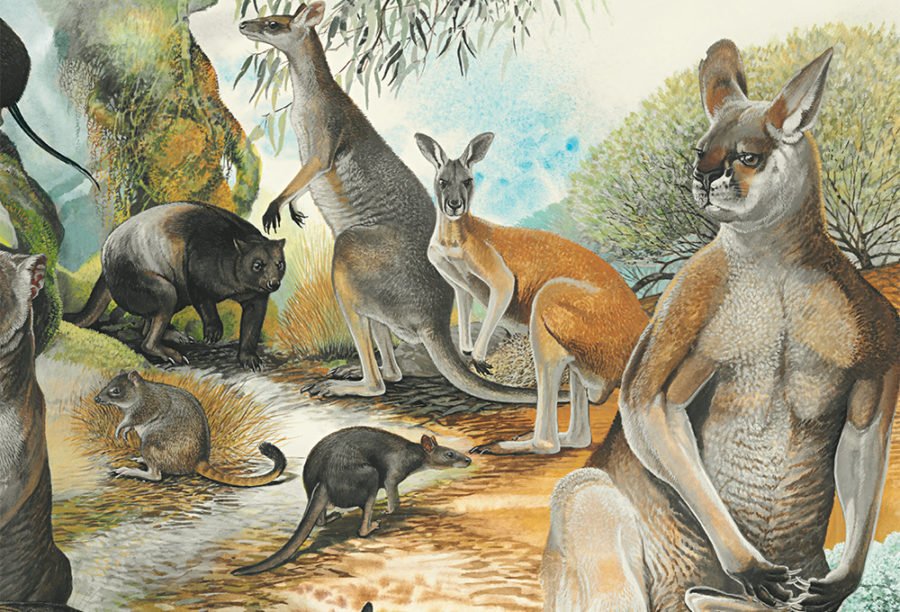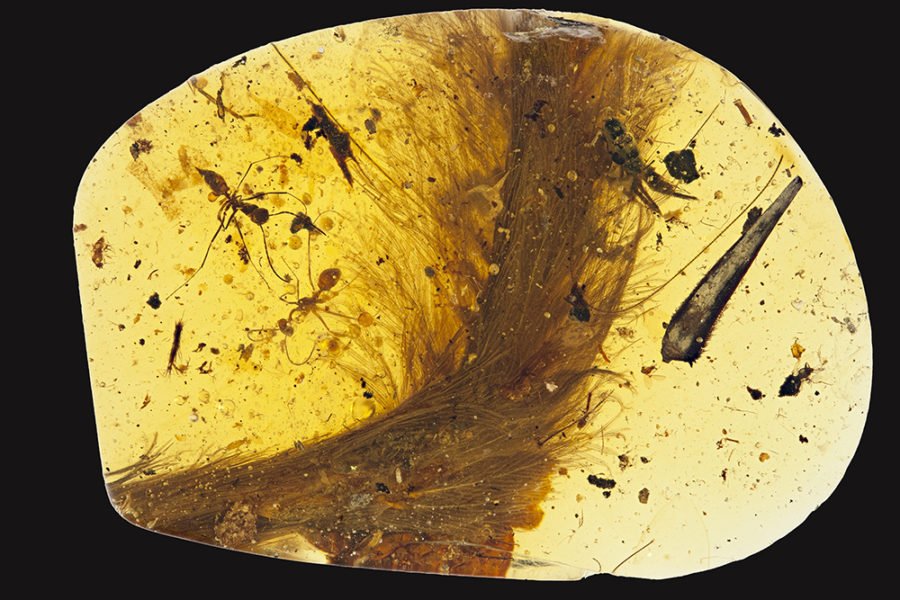Fossil Factfile: Procoptodon

John Pickrell
John Pickrell

When: 1 million – 10,000 years ago
Where: Across outback Australia
Name: Procoptodon goliah
Size: 2m tall; 230kg in weight
Described: Richard Owen at London’s Natural History Museum in 1846.
THIS WAS THE largest kangaroo ever to have bounded across Australia. Its hind feet showed extreme adaptation to hopping with a single long, sturdy fourth toe to restrict lateral movement and blunt hoof-like claws.
The high-crowned teeth bore multiple ridges (crenellations) that would have helped pulverise coarse plant matter. Procoptodon goliah inhabited arid Central Australian scrublands and plains.
Forward-facing eyes would have improved depth perception and assisted with using its long forelimbs to manipulate food in front of and above the body.
Procoptodon had an expanded nasal area that housed a mass of fine, bony sheets called turbinates. These might have helped moisten the dry desert air but would also have increased the area for nasal sensory tissues, suggesting a good sense of smell. P. goliah was part of the famed Australian megafauna, a suite of oversized animal species that became extinct from about 45,000 years ago.
Height estimates for Procoptodon of up to 3m have been discredited, although it would have been able to reach to this height with its arms, which could be lifted above the body (something that modern terrestrial kangaroos are not capable of).
According to the Australian Museum, Procoptodon fossils have has been found in most states except Tasmania and the NT. Elsewhere it has been found in the Darling Downs, QLD; in the Murray-Darling basin, Lake Menindee, Tocumwal and Bingara in NSW; from the western Eyre Peninsula and Naracoorte Caves in SA; and the Nullarbor caves in WA.
Procoptodon could have lived alongside Aboriginal people in Australia for 30,000 years or more, and stories of large, long-armed dangerous kangaroos still exist in the mythology and dreamtime of some groups in NSW.
It may have become extinct because of climatic changes in the Pleistocene, but whether or not human hunting also had a role remains an area of contention.
Procoptodon skull. The species had enormous crowns with multiple ridges particularly suited for grinding tough grasses; forward-facing eyes indicate stereoscopic vision.

John Pickrell is the author of Flying Dinosaurs: How fearsome reptiles became birds, published by NewSouth Books. Follow him on Twitter @john_pickrell.
Source: Text partially adapted from supplement to AG 96.




